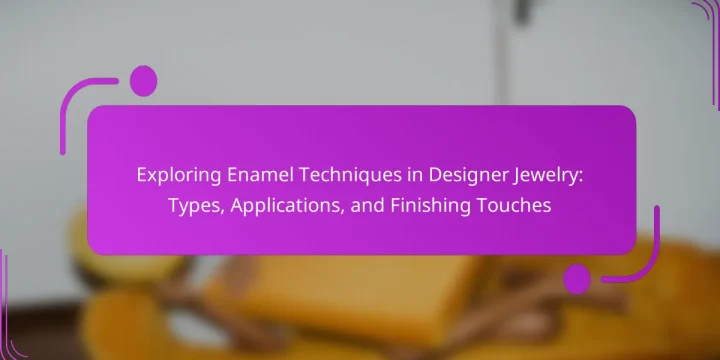
Enamel techniques in designer jewelry refer to methods for applying colored glass to metal surfaces, enhancing both aesthetic appeal and durability. Key techniques include cloisonné, which uses metal compartments to hold enamel; champlevé, which involves carving sections of metal for enamel filling; and plique-à-jour, characterized by transparent enamel that resembles stained glass. The jewelry-making process involves preparing the metal, applying enamel, and firing it to bond with the surface. Finishing touches such as polishing, protective coatings, and quality metal settings further enhance the visual appeal and longevity of enamel jewelry. These techniques have a rich history, showcasing their versatility and enduring popularity in jewelry design. What are Enamel Techniques in Designer Jewelry? Enamel techniques in designer jewelry are methods used to apply colored glass to metal surfaces. These techniques enhance…


